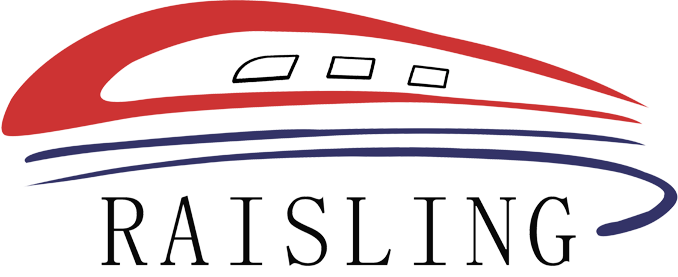-
ProductsAt present, the company has the ability to produce 50000 tons of rail buckle accessories annually. The product series includes various specifications of spring bars Gauge baffles, switch special pads, joint clamps for 43kg, 50kg, 60kg steel rails, various export products, etc

-

-
AboutThe company was established in 1994 and is a production enterprise specializing in the research and development, production, and sales of railway line specific accessories

Understanding Rail Fasteners: Key Components for Track Integrity
Jun 06,2025
Rail fasteners are critical components in railway systems, playing a pivotal role in maintaining the integrity and safety of the tracks. These fasteners secure the rails to the ties (or sleepers), ensuring that the track maintains its alignment and geometry under various conditions, including dynamic loads from passing trains and environmental changes. A thorough understanding of rail fasteners is

There are several types of rail fasteners, each designed for specific applications and conditions. The most commonly used types include clip fasteners, bolt and nut systems, and wedge-type fasteners. Clip fasteners, such as elastic rail clips, are widely favored due to their ease of installation and ability to absorb vibrations. They provide a secure connection while allowing some movement, which is crucial for tracks that need to accommodate thermal expansion and contraction.
Bolt and nut systems involve more traditional methods of fastening, where bolts are inserted through pre-drilled holes in the rail and tied down using nuts. This method is particularly effective in environments that require additional security and stability. However, it can be more labor-intensive to install and maintain. Wedge-type fasteners, often used in heavy rail applications, offer strong lateral restraint and are capable of handling significant forces, making them suitable for high-speed and heavy-load scenarios.
The importance of rail fasteners cannot be overstated. They not only hold the rails in place but also contribute to the overall safety and efficiency of the railway system. Proper installation and maintenance of rail fasteners are crucial for preventing track misalignment, which can lead to derailments or other serious incidents. Regular inspections and replacements of worn or damaged fasteners ensure the longevity of the track infrastructure.
Additionally, advancements in materials and technology have led to the development of more durable and corrosion-resistant rail fasteners. The use of high-strength alloys and protective coatings has enhanced the performance of these components, allowing them to withstand harsher environmental conditions and extending their service life.
In summary, rail fasteners are indispensable elements of railway systems, ensuring that tracks remain secure and reliable. Understanding their types, functions, and maintenance requirements is essential for professionals in the transportation industry, as it directly impacts the safety and efficiency of rail operations. By prioritizing the integrity of rail fasteners, organizations can enhance their operational effectiveness and contribute to the overall safety of rail travel.
Previous:
Recommended
There is one sheet production line and two high-precision engraving machines, with an annual production capacity of 6 million railway special height adjustment pads.
Electrostatic spraying workshop
There is one electrostatic spray equipment production line and one spray paint production line, with an annual production capacity of 10,000 tons.
Contact Us
Henan Xinda Railway Equipment Co., Ltd
Fax: +86-372-2615999
Tel: +86-18567891234
Email:info@xindarail.com
Send us your request
we will get in touch with you as soon as possible
COOKIES
Our website uses cookies and similar technologies to personalize the advertising shown to you and to help you get the best experience on our website. For more information, see our Privacy & Cookie Policy
COOKIES
Our website uses cookies and similar technologies to personalize the advertising shown to you and to help you get the best experience on our website. For more information, see our Privacy & Cookie Policy
These cookies are necessary for basic functions such as payment. Standard cookies cannot be turned off and do not store any of your information.
These cookies collect information, such as how many people are using our site or which pages are popular, to help us improve the customer experience. Turning these cookies off will mean we can't collect information to improve your experience.
These cookies enable the website to provide enhanced functionality and personalization. They may be set by us or by third-party providers whose services we have added to our pages. If you do not allow these cookies, some or all of these services may not function properly.
These cookies help us understand what you are interested in so that we can show you relevant advertising on other websites. Turning these cookies off will mean we are unable to show you any personalized advertising.
COOKIES
Our website uses cookies and similar technologies to personalize the advertising shown to you and to help you get the best experience on our website. For more information, see our Privacy & Cookie Policy
COOKIES
Our website uses cookies and similar technologies to personalize the advertising shown to you and to help you get the best experience on our website. For more information, see our Privacy & Cookie Policy
These cookies are necessary for basic functions such as payment. Standard cookies cannot be turned off and do not store any of your information.
These cookies collect information, such as how many people are using our site or which pages are popular, to help us improve the customer experience. Turning these cookies off will mean we can't collect information to improve your experience.
These cookies enable the website to provide enhanced functionality and personalization. They may be set by us or by third-party providers whose services we have added to our pages. If you do not allow these cookies, some or all of these services may not function properly.
These cookies help us understand what you are interested in so that we can show you relevant advertising on other websites. Turning these cookies off will mean we are unable to show you any personalized advertising.

